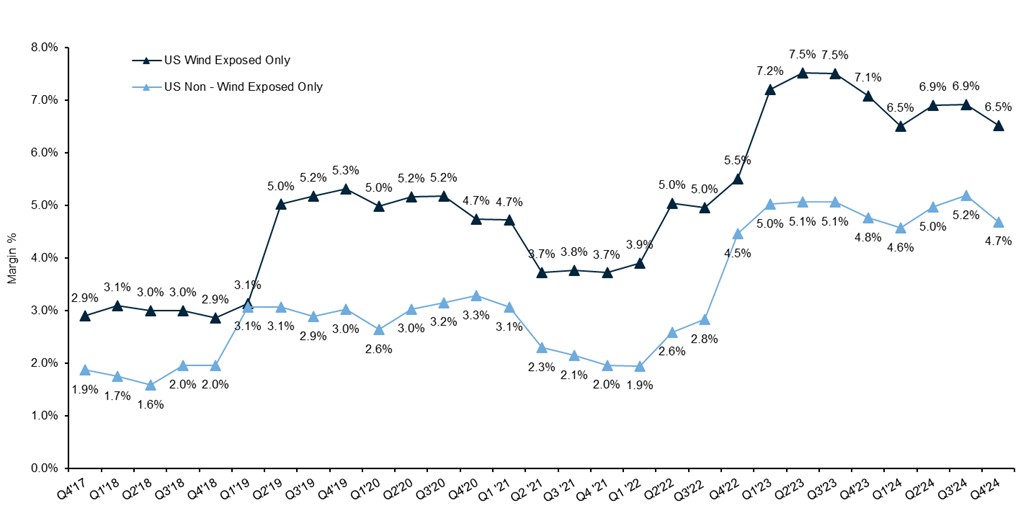Aviation
Ample capacity at 1.1.2025 led to a healthy, competitive tension between reinsurers this renewal. Non-proportional capacity was in plentiful supply, with buyers able to apply more pressure on reinsurers to improve the offered terms. Buyers were generally provided with more choices around structure and pricing alternatives. A blended mix of subscription and verticalized pricing was incorporated into some placements. Overall excess of loss pricing softened slightly, driven by increased supply.
Capacity levels for quota share placements were generally unchanged, although portfolio mix, back-year loss deterioration, and commission levels were all subject to close attention from reinsurers.
The trapped aircraft within Russia and the potential quantum of claims remains of concern to all parties, given the overall degree of uncertainty that continues to exist.
In the direct market, capacity levels remained strong, and rates have continued to soften. A combination of increased appetite from existing markets and the arrival of new capacity to the class broadened options for airline operators and buyers. Double-digit rate reductions have been evident, and vertical discounting was prominent as following/new markets looked to secure market share.
Just ahead of the market's key 1.1 inception date, the market learned of the tragic news relating to the Jeju Airline loss, on December 29, 2024. This loss will impact the 2024 underwriting and should further underline the need for airline insurers to change their approach to the pricing of airline business. Whilst it is far too early to make any comment around loss quantum, the resultant claims from this accident will further push the airline underwriting account into a deficit position.
Pricing within the general aviation market has similarly come under increasing pressure as certain markets have sought to further diversify their portfolios.
General levels of overcapacity have also continued to impact the products manufacturing segment, with pricing levels similarly coming under pressure, although perhaps to a slightly lesser extent than has been evident within the airline and general aviation sectors.
In aviation hull war and war third party liability, capacity was again plentiful in the direct market, with rating under severe pressure in the Q4 renewals — rate reductions of approximately -10% were seen, and differentials behind leaders have stretched further. All risk markets entered the segment to provide clients with a broader offering, and the continued expansion of line slips, thereby putting pressure on incumbents.
Reinsurers, meanwhile, have looked to maintain discipline in respect of deploying capacity and rating as of 1.1.2025; most renewals saw modest reductions due to overcapacity. Retention levels and vertical limits remained consistent year-on-year. Absent any material developments, the current environment within the war market is expected to continue throughout 2025.
Finally, the space market saw capacity contract, with several direct and reinsurance markets exiting the class, as the market continued to digest losses from 2023, which now total in excess of USD1.9B. At 1.1.2025, reinsurers generally looked to further trim excess proportional capacity from the market — resulting in approximately a -10% to -15% reduction in theoretical capacity.
Cedants that demonstrated superior results were able to secure loyalty from their (re)insurance panel. Commissions stayed flat. This is expected to create more upward pressure on rates through 2025, where there will likely not be enough available capacity to cover peak insured values of more than USD350M.






